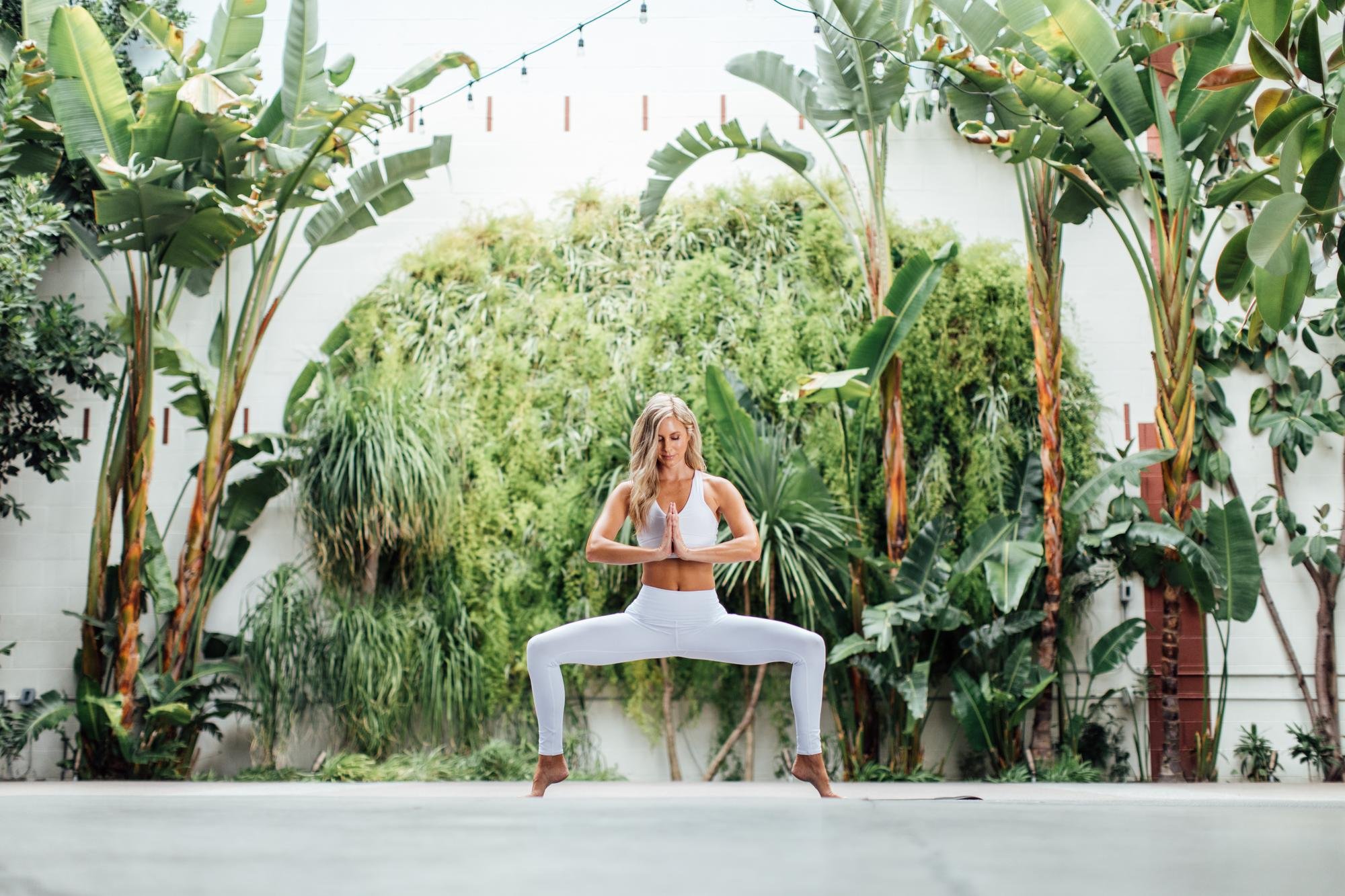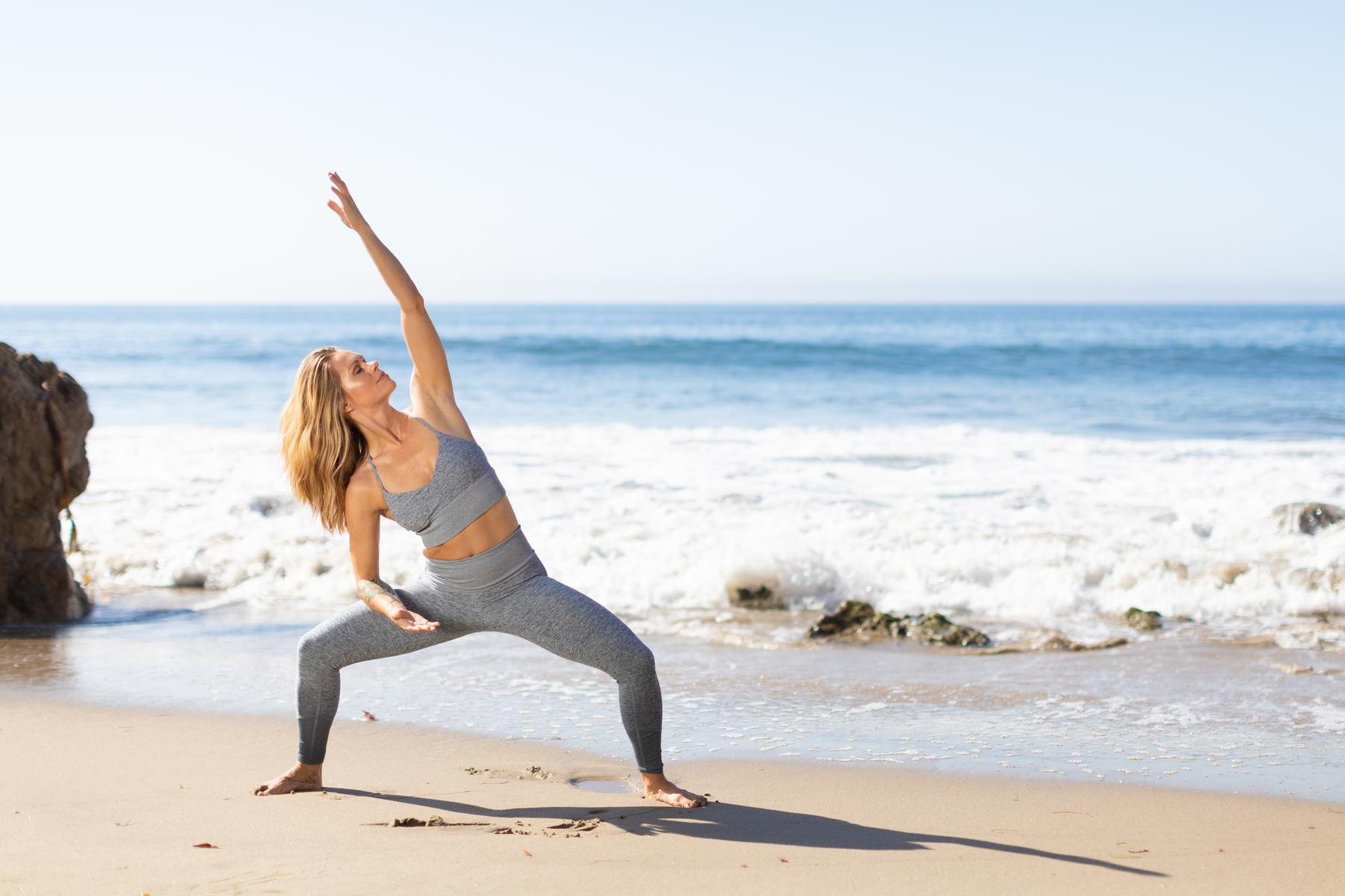Pose Breakdown: Goddess Pose
Unleash your divine power with Goddess Pose! Goddess Pose (Utkata Konasana), also known as Fierce Angle Pose or Victory Squat, invites you to take up all the space you need. While it’s pretty common in standard Vinyasa Yoga classes, this deep hip and pelvis opener is especially popular in Prenatal Yoga.
Goddess Pose is a powerful squat, with your hips dipping down, not back. This motion seriously tones your thighs, core, and back in addition to providing an intense inner thigh, hip, and pelvic stretch. Ease into it slowly and it’s incredibly rewarding.
Benefits of Goddess Pose
Strengthens your legs, hips, and core
Stretches your hips and inner thighs
Improves balance
Opens your hips and chest
Contraindications
Avoid this pose or speak with your doctor before attempting if you have any injuries to your hips, knees, ankles, or pelvic area.
Warm-Up Poses for Goddess Pose
Triangle Pose
Wide-Legged Forward Fold
How to Do Goddess Pose
1. Stand with your feet wider than shoulder-width apart. You’ll want a good amount of distance between your feet, but you should be able to bend your knees comfortably.
2. Turn your feet slightly outward, with your toes pointing toward the corners of your mat.
3. Begin to squat down while bending your knees.
4. Tuck your tailbone, press your belly button up and in, externally rotate your thighs, and straighten your spine while relaxing your shoulders.
5. Keep your knees over your ankles and keep sinking. If you can make it there comfortably, try to get your thighs parallel to the floor.
6. Your arms can bend at the elbows or rest wherever they’re comfortable. Many yogis like to integrate mudras, hand gestures that channel energy, into this pose, particularly Anjali Mudra (hands pressed together in prayer position) and Gyan Mudra (palm up with the tips of your index finger and thumb touching).
Follow-Up Poses for Goddess Pose
Wide-Legged Forward Fold
Goddess Pose Variations
1. Goddess Pose On Toes
One of the most popular Goddess Pose variations is to come up on your tiptoes. Remember to check in with your feet and ankles first!
2. Goddess Pose with a Twist
Add a twist to this pose with Revolved Goddess: Put your hands on your knees, making sure your tailbone is tucked and you’re externally rotating your hips and thighs. Turn your torso to face your left side, letting your right shoulder drop toward your hips and your left shoulder rise. Repeat on the other side.
3. Goddess Pose with Side Stretch
Integrate some side-body stretches while maintaining your sturdy Goddess squat — lean to either side with your arms overhead, or grab one wrist and pull for a deeper stretch. Going into a side-angle position works well too, with one elbow resting on your thigh and the other stretching overhead.
For added stability, try this pose while seated at the very edge of a chair.
Utkata Konasana Meaning and Background
Where have you seen “Utkata” before? Chair Pose (Utkatasana) is only called Chair because of its shape, and the actual translation is somewhat up to interpretation. Utkata is a deep and varied Sanskrit word, often translated to “powerful” or “fierce.” But it describes a very raw, untamed energy: mildly, it can translate to “uneven” or “awkward,” or it can scale up to “excessive,” “furious,” or “mad.”
“Kona” appears in many yoga poses, and means “angle.” So if you put “utkata,” “kona,” and “asana” (posture, pose, or seat) together, you get something like “Fierce Angle Pose.”
The origins of this pose are unclear, and while it’s been around for a good long while, it doesn’t appear in any of the early-20th-century texts that helped shape modern yoga—or any ancient ones. It might be a Chair Pose variation, it might not be. While a 2015 biography of Indra Devi, widely credited with bringing yoga to Hollywood in the 1940s, is called “The Goddess Pose,” it doesn’t have anything to do with the origins of this asana.
As yoga evolves organically, In some texts and sequences, particularly in Restorative Yoga, “Goddess Pose” refers to Supta Baddha Konasana, or Bound Angle Pose (often called Reclined Goddess Pose, too). Whether standing or reclined, some guides reverse engineer the Sanskrit name to “Shakti Asana.”
Awaken the divine within you with Naya Rappaport’s Natural Rhythm series, available for free with a 14-day trial to Alo Moves.




